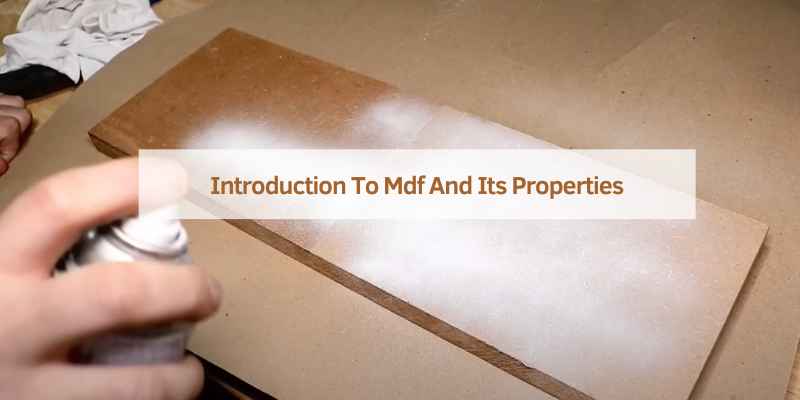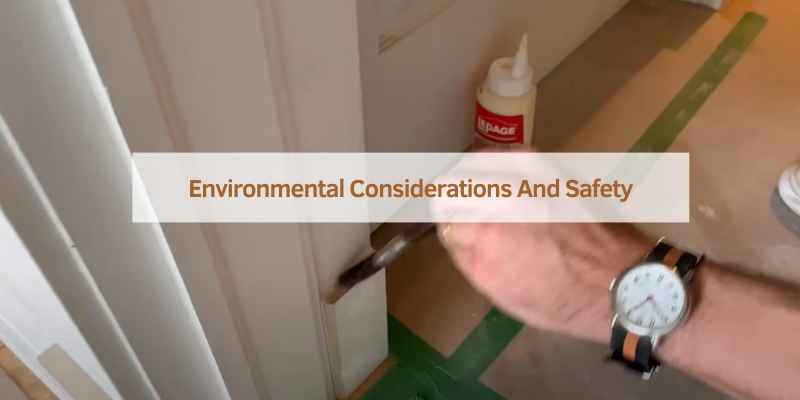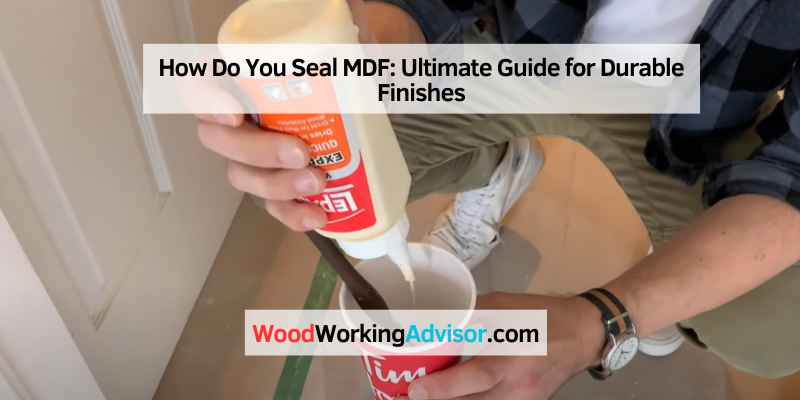To seal MDF, apply a thin coat of a solvent-based primer or sanding sealer. Allow it to dry, then sand lightly.
Sealing MDF (Medium Density Fiberboard) is crucial to protect it from moisture and ensure a smooth finish. MDF is highly absorbent and can swell or warp if exposed to water. A solvent-based primer or sanding sealer effectively seals the surface, preventing damage.
Light sanding after the first coat ensures an even surface, ready for painting or further finishing. Properly sealed MDF enhances durability and provides a professional look. This simple process not only extends the life of your MDF projects but also makes them more resistant to wear and tear.
Introduction To Mdf And Its Properties
Medium Density Fiberboard, or MDF, is a popular material in woodworking. It is known for its smooth surface and versatility. MDF is used in furniture, cabinets, and decorative projects. Understanding MDF’s properties is crucial for effective sealing.
What Is Mdf?
MDF is an engineered wood product. It is made from wood fibers, wax, and resin. These materials are compressed under high pressure and heat. The result is a dense, stable board with a smooth surface.
The smooth surface of MDF makes it ideal for painting and veneering. It is more uniform than natural wood. MDF does not have knots or grain patterns.
Advantages And Challenges Of Mdf
MDF has several advantages:
- Cost-effective: MDF is cheaper than solid wood.
- Versatile: It can be cut, shaped, and painted easily.
- Consistent: MDF is free from natural defects like knots.
MDF also has some challenges:
- Sensitive to moisture: MDF can swell and warp if exposed to water.
- Heavy: MDF boards are denser and heavier than plywood.
- Dust: Cutting MDF produces fine dust that can be harmful if inhaled.
Understanding these properties helps in choosing the right sealing method. Sealing MDF protects it from moisture and extends its lifespan.

Preparation Steps Before Sealing
Before sealing MDF, you must prepare the surface. Proper preparation ensures a smooth, durable finish. Follow these steps to achieve the best results.
Cleaning The Surface
Start by cleaning the MDF surface. Remove all dust and debris. Use a vacuum cleaner or a soft brush. Make sure no particles remain on the surface.
Next, wipe the surface with a damp cloth. This removes fine dust. Allow the MDF to dry completely. Do not skip this step.
Sanding For Smoothness
Sanding is crucial for a smooth finish. Use a fine-grit sandpaper, around 220 grit. Sand the entire surface evenly. This helps the sealer adhere better.
After sanding, clean the surface again. Use a vacuum and a damp cloth. Ensure no sanding dust remains. This keeps the surface ready for sealing.
Choosing The Right Sealant For Mdf
Choosing the right sealant for MDF can be tricky. MDF, or Medium Density Fiberboard, is a versatile material but it needs proper sealing. This ensures durability and a smooth finish. Below, we’ll explore the best sealants and what you should consider.
Types Of Sealants Available
There are several types of sealants you can use for MDF. Each type has its own advantages and disadvantages.
- PVA Glue: This is a water-based glue. It is easy to apply and dries clear.
- Sanding Sealer: This type of sealant is designed to fill in the pores of the MDF. It creates a smooth surface.
- Shellac: This is a natural resin. It provides a durable and glossy finish.
- Polyurethane: This sealant is very durable. It is perfect for surfaces that will get a lot of use.
Factors To Consider
When choosing a sealant for MDF, several factors come into play. Here is a table to help you decide:
| Factor | Explanation |
|---|---|
| Ease of Application | Some sealants are easier to apply than others. |
| Drying Time | Consider how long the sealant takes to dry. |
| Durability | Choose a sealant that will last for a long time. |
| Finish | Do you want a glossy or matte finish? |
| Cost | Some sealants are more expensive than others. |
Application Techniques For Sealant
Sealing MDF (Medium-Density Fiberboard) is crucial for durability and a smooth finish. Choosing the right application method affects the final result. Below are some effective techniques for applying sealant on MDF.
Brush Vs. Spray Methods
Two main methods for applying sealant are brushing and spraying. Each has its own advantages and disadvantages.
| Method | Advantages | Disadvantages |
|---|---|---|
| Brush |
|
|
| Spray |
|
|
Tips For Even Application
Achieving an even application ensures a smooth and durable finish. Follow these tips for best results:
- Prepare the Surface: Clean the MDF surface thoroughly. Remove dust and debris before applying sealant.
- Use Primer: Apply a high-quality primer before sealing. This helps the sealant adhere better.
- Thin Coats: Apply sealant in thin, even coats. Avoid thick layers to prevent drips and bubbles.
- Smooth Strokes: Use smooth, even strokes if using a brush. Overlapping strokes ensure complete coverage.
- Proper Distance: Maintain the right distance if using a spray. Hold the spray can 6-12 inches away for even coverage.
- Allow Drying Time: Let each coat dry completely before applying the next. Follow the manufacturer’s drying time recommendations.
Following these tips helps achieve a professional and durable finish on MDF.
Drying And Curing Time
Sealing MDF (Medium Density Fiberboard) requires patience. The drying and curing time is crucial to ensure a durable finish. Proper drying prevents warping and enhances the longevity of your project.
Ideal Conditions For Drying
For the best results, seal MDF in a controlled environment. Temperature and humidity play key roles in the drying process.
- Temperature: Keep the room temperature between 60-75°F (15-24°C).
- Humidity: Maintain relative humidity at 50-60%.
Proper ventilation is essential. Open windows or use fans to circulate air. This helps the sealer dry evenly and quickly.
How To Speed Up The Process
Want to speed up the drying time? Follow these tips:
- Use a fast-drying sealer. Choose products specifically designed to dry quickly.
- Apply thin coats. Thick layers take longer to dry. Thin layers dry faster and more evenly.
- Employ a heat source. Use a heat gun or hair dryer. Keep it at a safe distance to avoid overheating the MDF.
Always check the manufacturer’s instructions on the sealer. This ensures you don’t compromise the quality of your work.
Tables can also be handy for summarizing information:
| Condition | Recommendation |
|---|---|
| Temperature | 60-75°F (15-24°C) |
| Humidity | 50-60% |
| Ventilation | Open windows or use fans |
By following these guidelines, you ensure a smooth drying and curing process for your MDF sealing project.
Finishing Touches After Sealing
After sealing MDF, the final touches are crucial. These steps ensure a smooth and durable finish. Proper finishing enhances the look and longevity of the MDF. Here, we’ll cover two important steps: Sanding Between Coats and Applying a Final Finish.
Sanding Between Coats
Sanding between coats is essential. It removes any dust particles or imperfections. Use a fine-grit sandpaper, around 220-grit, for the best results. Lightly sand the surface in a circular motion.
Be gentle to avoid removing too much of the previous coat. After sanding, wipe away the dust with a clean, damp cloth. Make sure the surface is dry before applying the next coat.
Repeat this process between each coat. This ensures a smooth and even finish. Here is a simple step-by-step guide:
- Lightly sand the sealed surface with 220-grit sandpaper.
- Wipe the surface with a damp cloth to remove dust.
- Allow the surface to dry completely.
- Apply the next coat of sealer or paint.
Applying A Final Finish
Applying a final finish adds an extra layer of protection. Choose a finish that suits your project. Popular options include varnish, polyurethane, or paint.
For a clear finish, varnish or polyurethane works well. Apply it with a brush or spray in thin, even coats. Let each coat dry according to the manufacturer’s instructions.
If you prefer a painted finish, use a high-quality paint. Apply multiple thin coats for an even color. Let each coat dry before applying the next. Here’s a quick checklist for applying a final finish:
- Select your preferred finish: varnish, polyurethane, or paint.
- Apply the finish in thin, even coats.
- Allow each coat to dry as per instructions.
- Lightly sand between coats if needed.
- Repeat until you achieve the desired finish.
These finishing touches ensure your MDF project looks great and lasts long. Follow these steps to achieve a professional-quality finish.
Maintenance And Care For Sealed Mdf
Sealed MDF is durable and long-lasting if you take care of it properly. Regular maintenance ensures its beauty and functionality. Let’s explore some useful tips for keeping your sealed MDF in top condition.
Routine Cleaning Tips
Regular cleaning is essential for maintaining sealed MDF. Dust and dirt can cause scratches over time.
- Dust the surface using a soft cloth.
- Use a mild soap solution for cleaning.
- Wipe with a damp cloth and dry it immediately.
- Avoid using harsh chemicals or abrasive materials.
Follow these steps to keep your MDF clean and shiny.
Dealing With Wear And Tear
Sealed MDF can face wear and tear over time. Addressing these issues promptly can prevent further damage.
| Issue | Solution |
|---|---|
| Scratches | Use a touch-up pen to cover small scratches. |
| Chips | Fill chips with wood filler and sand lightly. |
| Water Stains | Use a cloth soaked in vinegar to remove stains. |
Regular inspections can help identify and fix minor issues quickly. This will keep your MDF looking new for longer.
Common Mistakes To Avoid
Common Mistakes to Avoid when sealing MDF (Medium Density Fiberboard) can lead to a subpar finish. Ensuring the best results requires attention to detail and awareness of common pitfalls. Avoiding these mistakes will help achieve a smooth and durable surface.
Over-sanding The Surface
Over-sanding MDF can cause damage and reduce its ability to hold the sealant. MDF is made of fine particles, and excessive sanding can break down the surface structure.
- Use a light touch with fine-grit sandpaper.
- Sand gently to avoid creating grooves or uneven spots.
- Check the surface frequently to prevent over-sanding.
A smooth, even surface is essential for effective sealing. Over-sanding can make the MDF too porous, affecting the sealant’s adhesion.
Applying Sealant In Poor Conditions
Environmental conditions matter when sealing MDF. Applying sealant in a humid or dusty environment can compromise the finish.
| Condition | Effect |
|---|---|
| High Humidity | Slows down drying time and can cause swelling. |
| Dusty Area | Particles can stick to the wet sealant, causing a rough finish. |
Always work in a clean, dry, and well-ventilated space. This ensures the sealant dries properly and forms a smooth, durable coat.
Temperature is also crucial. Extreme temperatures can affect the sealant’s consistency and drying time. Ideal conditions are room temperature and low humidity.
Creative Uses For Sealed Mdf
Sealed MDF (Medium Density Fiberboard) offers many creative possibilities. Its smooth surface and durability make it ideal for various projects. Once sealed, MDF becomes more resistant to moisture and wear, which expands its usability.
Diy Project Ideas
Sealed MDF can be used for a range of exciting DIY projects. Here are a few ideas to get you started:
- Custom Shelving Units: Create unique shelves that fit any space perfectly.
- Decorative Wall Panels: Add a touch of elegance with custom-designed wall panels.
- Furniture Pieces: Build coffee tables, nightstands, and more with sealed MDF.
- Art and Craft Projects: Make intricate decorations or sturdy frames for your artwork.
Each of these projects benefits from MDF’s smooth finish and durability. Sealing MDF ensures it remains strong and looks great over time.
Professional Applications
Professionals also use sealed MDF in a variety of applications. Here are some common uses:
| Application | Benefits |
|---|---|
| Cabinetry | Sealed MDF is perfect for custom cabinets due to its smooth finish and strength. |
| Retail Displays | It provides a durable surface that can be easily painted and customized. |
| Signage | MDF signs are durable and can be intricately cut for detailed designs. |
| Architectural Models | Sealed MDF is ideal for creating detailed and sturdy models. |
Sealed MDF’s versatility makes it a favorite in many professional settings. Its ability to be machined and painted opens up endless possibilities.
Environmental Considerations And Safety
Sealing MDF (Medium Density Fiberboard) is important for durability and appearance. It’s also essential to consider the environment and safety. Using eco-friendly products and safe practices helps protect the planet and your health.
Using Eco-friendly Sealants
Choose sealants with low or no VOCs (Volatile Organic Compounds). VOCs are chemicals that can harm the air and your health. Look for water-based sealants. They are better for the environment and easier to clean.
Use products with certifications like GreenGuard or EcoLogo. These labels mean the product is safe for indoor air quality. They also show the product meets strict environmental standards.
| Brand | Type | Certification |
|---|---|---|
| Eco-Seal | Water-Based | GreenGuard |
| NatureShield | Low-VOC | EcoLogo |
Recycle the containers once you are done. Always read the labels for proper disposal instructions.
Health And Safety Best Practices
Wear safety gear like gloves and masks. This keeps you safe from fumes and skin contact. Work in a well-ventilated area. Open windows and use fans to keep the air fresh.
Keep children and pets away from the work area. Store sealants and tools out of their reach. Follow the manufacturer’s instructions carefully. This ensures you use the product safely and effectively.
Dispose of rags and brushes properly. Some products are flammable and need special disposal. Check local regulations for guidelines.
- Wear gloves and masks
- Work in well-ventilated areas
- Keep children and pets away
- Follow manufacturer instructions
- Dispose of materials properly
By following these steps, you can seal MDF effectively and safely. Protecting your health and the environment is always a priority.

Frequently Asked Questions
What Is The Best Thing To Seal Mdf With?
The best sealant for MDF is polyurethane or acrylic sealer. Apply it evenly to protect and prime the surface.
Does Mdf Board Need To Be Sealed?
Yes, MDF board needs to be sealed. Sealing prevents moisture absorption, swelling, and damage. Use a primer or sealant for best results.
How To Seal Mdf To Make It Waterproof?
Seal MDF by applying a waterproof primer. Then, use a high-quality waterproof paint or sealant. Sand between coats for a smooth finish. Ensure edges are well-sealed to prevent water damage.
What Happens If You Don’t Seal Mdf?
Unsealed MDF absorbs moisture, causing it to swell and warp. It becomes prone to damage and mold growth. Paint and finishes won’t adhere well, leading to poor appearance. Sealing MDF prevents these issues, ensuring durability and longevity.
Conclusion
Mastering the art of sealing MDF ensures durability and a polished finish. Follow the steps outlined for best results. Proper preparation and the right sealant make a significant difference. Enjoy a smooth, long-lasting surface. Your projects will look professional and withstand the test of time.
Happy crafting!


